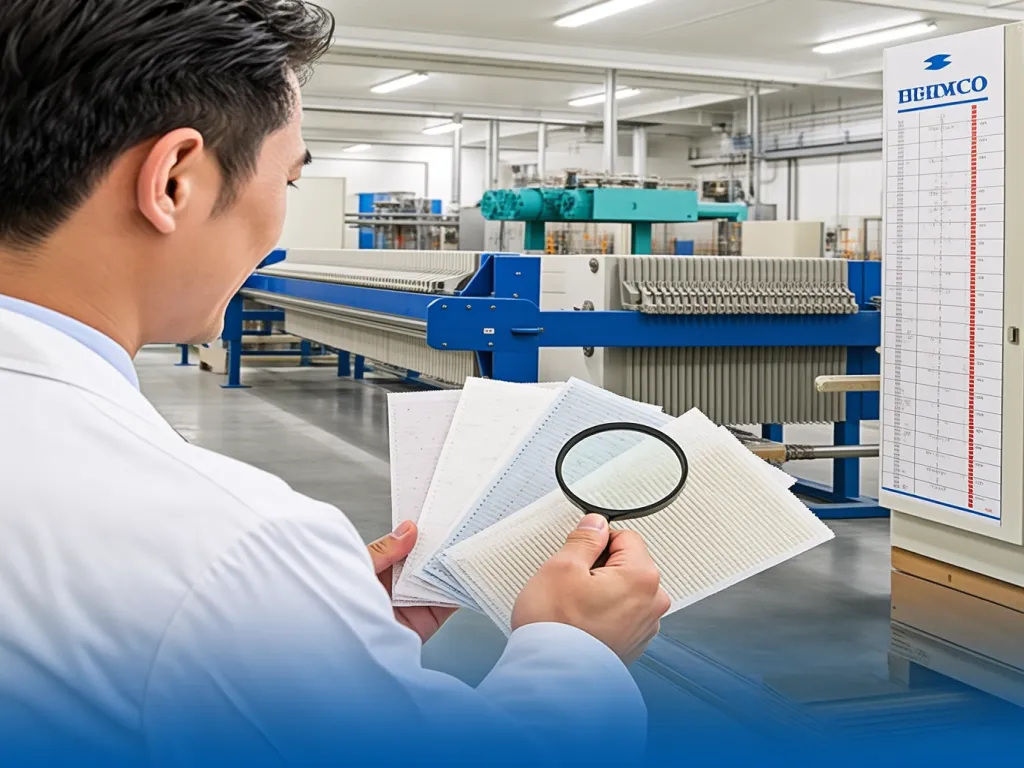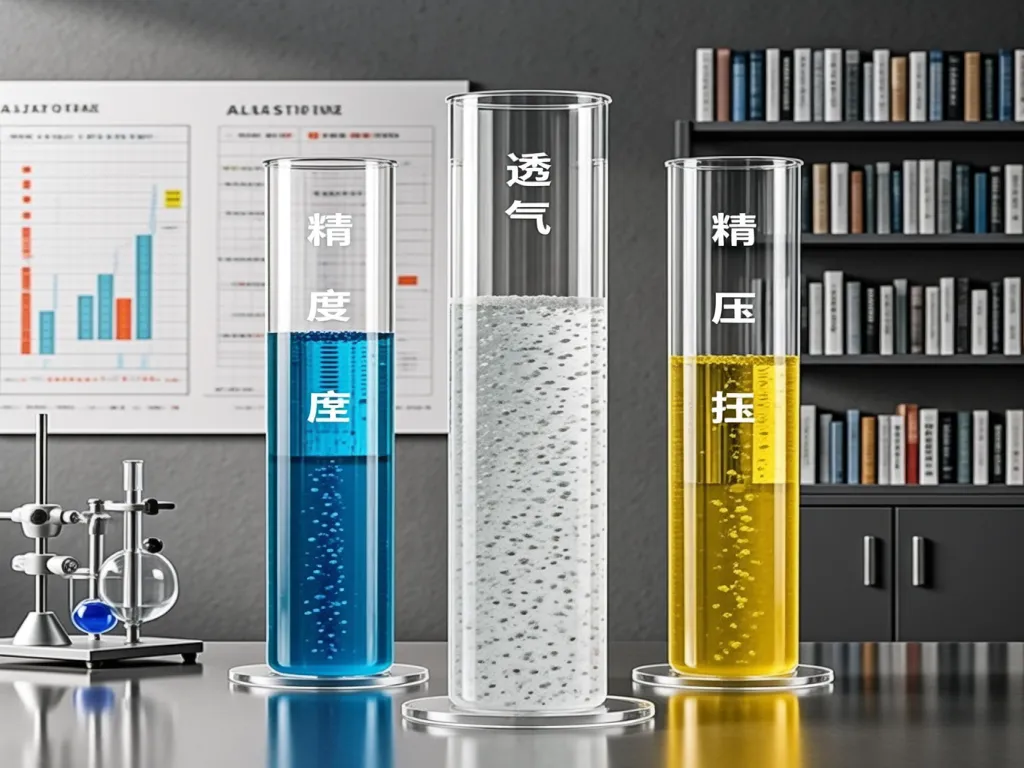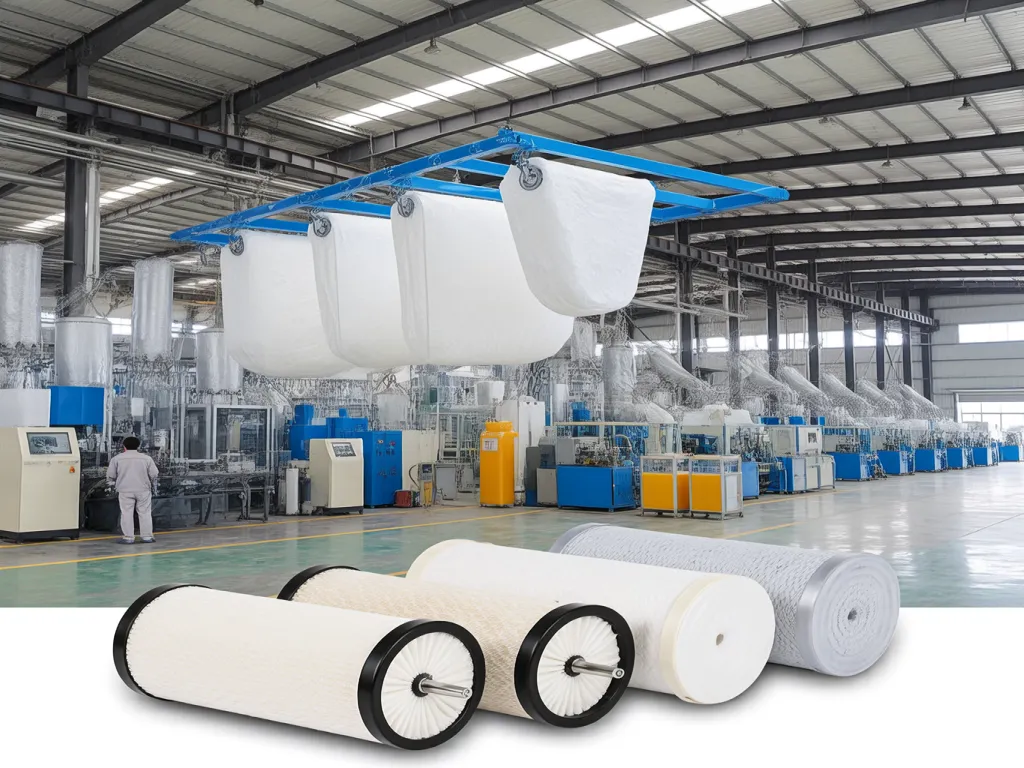Filter Bag Mastery: Pick Perfect Material & Performance

When it comes to industrial filtration, selecting the right filter bag can make or break your system’s efficiency. With countless materials and performance specs to consider, how do you ensure you’re making the best choice? This guide dives deep into filter bag material comparisons, performance analysis, and real-world applications to help you optimize your industrial setup. Ready to transform your filtration process?

Material Comparison: From Polyester, Polypropylene to Nomex, Analyzing Temperature Resistance, Chemical Stability, and Mechanical Strength of Various Filter Bag Materials
When it comes to industrial filtration, selecting the right filter bag material is not just a choice—it’s a necessity. Each material brings its own set of strengths and weaknesses, tailored to specific industrial environments. So, how do you choose between polyester, polypropylene, and Nomex filter bags? Let’s dive into the nitty-gritty of each material’s temperature resistance, chemical stability, and mechanical strength to help you make an informed decision.
Polyester Filter Bags: The Versatile Workhorse
Polyester filter bags are the go-to option for many industrial applications, and for good reason. They offer a balanced combination of durability, cost-effectiveness, and versatility. Temperature-wise, polyester can withstand continuous operating temperatures up to 130°C (266°F), making it suitable for a wide range of processes. But what really sets polyester apart is its chemical stability. It’s resistant to most acids, alkalis, and organic solvents, though it may not fare well against strong oxidizing agents. Mechanically, polyester filter bags are robust. They have good tensile strength and can withstand the rigors of repeated cleaning cycles, whether through pulse-jet or reverse-air methods. This makes them ideal for applications involving moderate to high dust loads, such as in cement plants. For high-efficiency industrial filtration in cement plants, consider exploring wholesale nonwoven aramid filter bags as an alternative or complement to polyester options.
Polypropylene Filter Bags: The Lightweight Contender
If you’re looking for a filter bag material that’s both lightweight and cost-effective, polypropylene might be your answer. Polypropylene filter bags can handle temperatures up to around 90°C (194°F), which is lower than polyester but still adequate for many low to medium-temperature applications. Their chemical stability is impressive too, with resistance to a wide range of chemicals, including acids and alkalis, though they can be sensitive to oxidizing agents and aromatic hydrocarbons. The real selling point of polypropylene is its low density, which translates to lighter filter bags and potentially lower shipping costs. However, this lightweight nature comes with a trade-off in mechanical strength. Polypropylene filter bags are generally less durable than their polyester counterparts, making them better suited for applications with lower dust loads and less abrasive environments, such as in pharmaceuticals or certain chemical processing industries.
Nomex Filter Bags: The High-Temperature Champion
When the industrial environment demands extreme heat resistance, Nomex filter bags step up to the plate. Nomex, an aramid fiber, can withstand continuous operating temperatures up to 204°C (400°F) and even short-term exposures up to 250°C (482°F). This makes it the material of choice for high-temperature applications like asphalt mixing, incineration, and certain metal processing operations. Chemically, Nomex is stable across a broad pH range, though it can be affected by strong oxidizing agents and certain solvents. Its mechanical strength is another plus, offering excellent tensile and tear resistance, which is crucial for handling high-pressure drop conditions and abrasive dusts. However, the superior performance of Nomex comes at a cost. It’s generally more expensive than polyester or polypropylene, making it a premium choice reserved for applications where its unique properties are absolutely necessary.
Making the Right Choice
So, how do you decide which filter bag material is right for your industrial environment? Start by assessing your temperature requirements. If your process operates at moderate temperatures, polyester might be your best bet. For lower-temperature, less abrasive applications, polypropylene could offer cost savings. And if you’re dealing with extreme heat, Nomex is your go-to. For specific polyester options tailored to your needs, you can explore wholesale polyester pocket filter bags or wholesale polyester dust collector filter bags for direct factory supply. Additionally, for specialized applications requiring high-efficiency filtration, consider wholesale FMS felt filter bags from factory suppliers. Next, consider the chemical environment. Are there specific chemicals your filter bag will be exposed to? Make sure the material you choose is chemically stable against those substances. Finally, don’t overlook mechanical strength. The abrasiveness of your dust and the cleaning method you’ll use can significantly impact the lifespan of your filter bags. Choose a material that can withstand the mechanical stresses of your operation. By carefully evaluating these factors, you can select the filter bag material that offers the best balance of performance, durability, and cost-effectiveness for your specific industrial environment.

Performance Analysis: Exploring Key Indicators like Filtration Accuracy, Air Permeability, and Pressure Drop
When it comes to industrial filtration, the performance of your filter bag can make or break your operation. It’s not just about having a filter in place; it’s about having the right filter that performs optimally under your specific conditions. Let’s dive deep into the critical performance indicators: filtration accuracy, air permeability, and pressure drop, and understand how they impact your filtration efficiency and operational costs.
Filtration Accuracy
Filtration accuracy is the measure of how effectively a filter bag can capture and retain particles of a specific size. It’s a game-changer in industries where even the tiniest contaminant can cause significant damage or quality issues. For instance, in the pharmaceutical industry, a high filtration accuracy is non-negotiable to ensure product purity. On the other hand, in less sensitive applications like general dust collection, a slightly lower accuracy might be acceptable, saving you costs without compromising much on performance. Choosing the right filter bag, such as those with nonwoven needle felt filter bags known for their high filtration efficiency, can significantly enhance your filtration process.
Air Permeability
Now, let’s talk about air permeability. This refers to how easily air can pass through the filter bag. High air permeability means less resistance to airflow, which translates to lower energy consumption for your fan or blower. But here’s the catch: increasing air permeability often comes at the expense of filtration accuracy. So, it’s a balancing act. You need to find the sweet spot where your filter bag allows enough airflow to keep your system running efficiently while still capturing the particles you need to remove.
Pressure Drop
Pressure drop is another crucial factor. It’s the difference in pressure between the inlet and outlet of the filter bag. A high pressure drop means your system has to work harder to push air through the filter, leading to increased energy consumption and, consequently, higher operational costs. Over time, a high pressure drop can also lead to premature filter bag failure, requiring more frequent replacements and adding to your maintenance costs. Selecting the right filter bag, like polyester filter socks, can help manage pressure drop effectively.
Impact on Filtration Efficiency and Running Costs
So, how do these indicators affect your filtration efficiency and running costs? Well, a filter bag with high filtration accuracy but low air permeability might capture particles effectively but will require more energy to operate, increasing your costs. Conversely, a filter bag with high air permeability but low filtration accuracy might save you on energy but could let through harmful particles, compromising your product quality or equipment.
Optimizing Performance Indicators
The key is to optimize these indicators based on your specific industrial application. For instance, if you’re dealing with highly corrosive or abrasive materials, you might prioritize a filter bag with excellent chemical stability and mechanical strength, even if it means slightly compromising on air permeability. On the other hand, if energy efficiency is your top priority, you might opt for a filter bag with higher air permeability, provided it meets your filtration accuracy requirements.
Conclusion
In conclusion, understanding and optimizing the performance indicators of your filter bag is crucial for maximizing filtration efficiency and minimizing running costs. It’s not a one-size-fits-all scenario; it’s about finding the right balance for your specific needs. So, take the time to assess your industrial application, understand your requirements, and choose a filter bag that delivers the performance you need at a cost you can afford.

Practical Application Cases: Success Stories of filter bag Material and Performance Selection in Different Industrial Scenarios
When it comes to industrial filtration, the right choice of filter bag can make all the difference. Let’s dive into some real-world examples where the right material and performance selection led to remarkable results. First up, consider a cement manufacturing plant. Cement production involves high temperatures and abrasive particles. Here, the traditional polyester filter bags were failing due to their limited temperature resistance. The plant switched to Nomex filter bags. Nomex, with its excellent temperature resistance up to 200°C, proved to be a game-changer. Not only did it withstand the harsh conditions, but its high mechanical strength also reduced bag breakage, leading to fewer replacements and lower maintenance costs. The plant reported a 30% reduction in filter bag replacement frequency and a significant improvement in overall filtration efficiency.
Moving on to the chemical industry, a pharmaceutical company was struggling with chemical corrosion in their filtration process. Their polypropylene filter bags were degrading rapidly due to exposure to aggressive chemicals. After a thorough analysis, they opted for PTFE (Teflon)-coated filter bags. PTFE’s exceptional chemical stability made it resistant to almost all chemicals, ensuring longevity even in the most corrosive environments. The result? A 50% increase in filter bag lifespan and a drastic reduction in downtime caused by filter bag failures. This not only saved costs but also enhanced the purity of the final product, meeting stringent pharmaceutical standards.
Now, let’s talk about the food and beverage industry. A juice processing plant was facing issues with flavor contamination due to inadequate filtration. Their existing filter bags were not providing the necessary filtration precision, allowing unwanted particles to pass through. After evaluating various options, they chose a microfiber glass filter bag with a high filtration efficiency. The microfiber structure trapped even the smallest particles, ensuring pure and flavorful juice. The plant saw a 20% improvement in product quality, with customers noticing a significant difference in taste. Plus, the reduced particle load in the final product extended the shelf life, reducing waste and increasing profitability.
Lastly, consider a power plant generating electricity from coal. The plant was experiencing high pressure drops across their filter bags, leading to increased energy consumption and higher operational costs. By switching to a filter bag with optimized breathability and lower pressure drop characteristics, they managed to reduce the energy required for filtration by 15%. This not only cut down on electricity bills but also extended the lifespan of the filtration system by reducing wear and tear. These examples highlight the importance of understanding the specific needs of your industrial process and selecting the right filter bag material and performance accordingly. It’s not just about picking a bag off the shelf; it’s about analyzing your environment, understanding the challenges, and making an informed decision that will save you money, improve efficiency, and enhance product quality. So, how do you ensure you’re making the right choice? Start by assessing your industrial environment – temperature, chemical exposure, particle size, and flow rates. Then, consider the performance metrics that matter most to you – filtration efficiency, pressure drop, and lifespan. Finally, don’t hesitate to consult with experts or look for case studies similar to your scenario. Remember, the right filter bag can transform your filtration process, leading to cost savings, improved efficiency, and better product quality. Isn’t it time you gave your industrial filtration the attention it deserves?
Choosing the right filter bag material and performance specs isn’t just about meeting requirements—it’s about unlocking maximum efficiency and cost savings for your industrial operations. From polyester’s versatility to Nomex’s heat resistance, and from filtration precision to pressure drop management, every detail matters. Use this guide as your roadmap to select the perfect filter bag for your needs. Share your success stories or questions below—and don’t forget to explore our industrial filter bag selection guide for even deeper insights!

